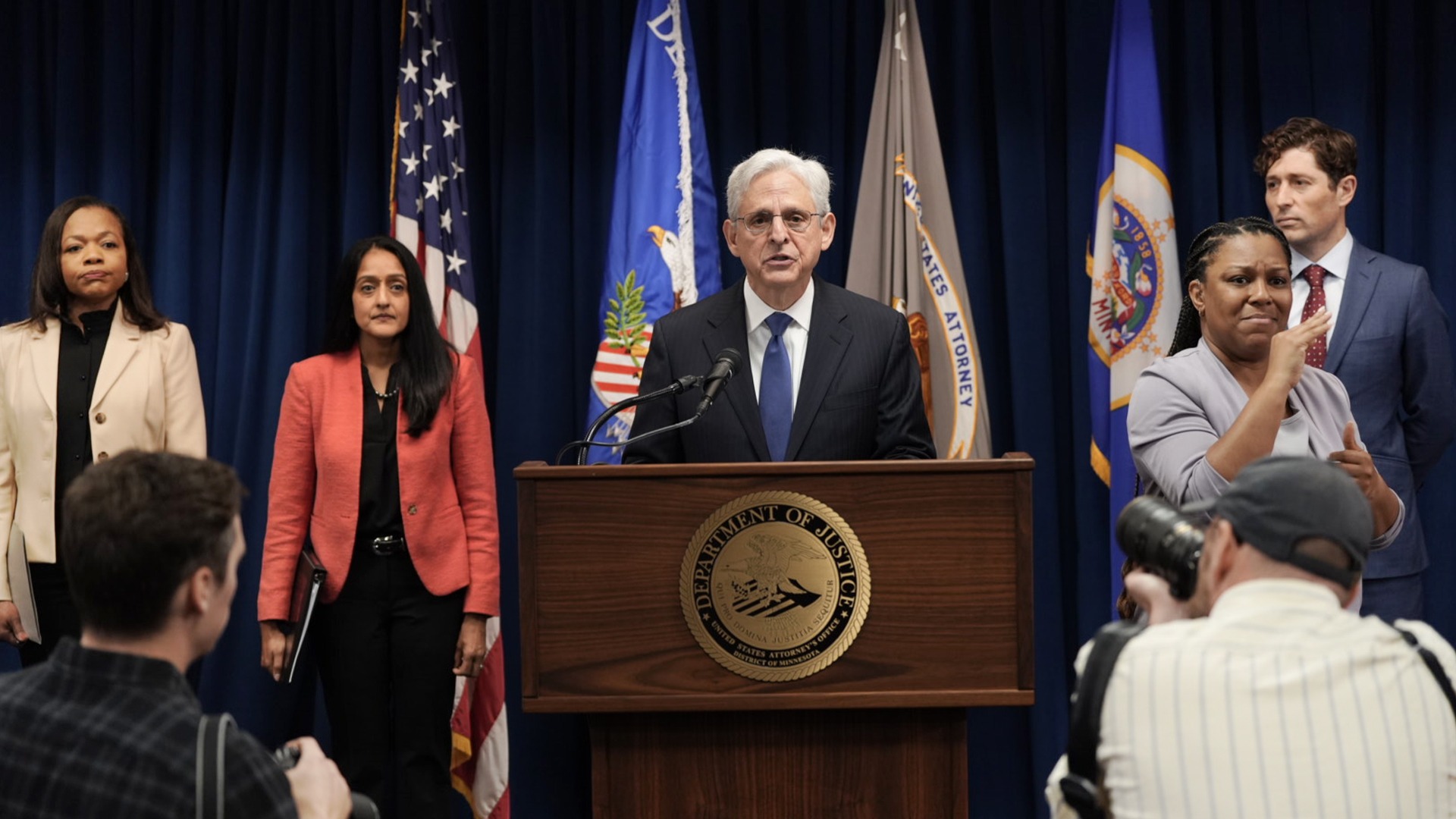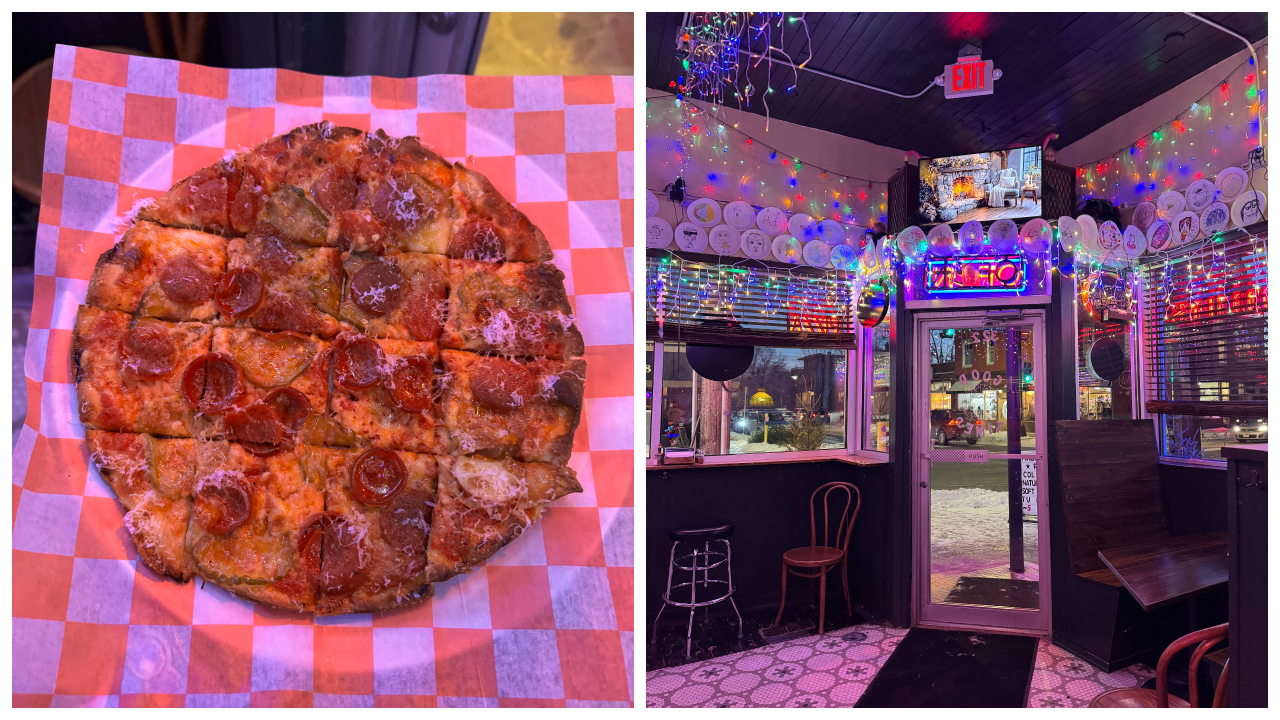Welcome back to The Flyover, your daily digest of what local media outlets and Twitter-ers are gabbing about.
Lowlights From DOJ's Long, Damning MPD Report
The Justice Department just released its findings on the Minneapolis Police Department and, as everyone anticipated, the news was genuinely horrifying. Much as the Minnesota Department of Human Rights discovered after analyzing over a decade of data, the DOJ has determined that MPD has a use of force problem, a racism problem, a problem with disabled and mentally unwell people, and a problem violating people’s freedom of speech. While the 92-page report is full of data-backed conclusions, it also collects numerous very upsetting examples of police misconduct, which you can read here. Here are are some particularly nauseating excerpts we pulled from it.
On force:
We reviewed all of the 19 police shootings that occurred from January 1, 2016, to August 16, 2022. Although this number is relatively small, a significant portion of them were unconstitutional uses of deadly force. At times, officers shot at people without first determining whether there was an immediate threat of harm to the officers or others.
“Firing guns without regard to people in their line of fire.”
In one example, an off-duty officer fired his gun at a car containing six people within three seconds of getting out of his squad car. The off-duty officer had responded to a “shots fired” call. Meanwhile, other officers had already responded and instructed a car full of passengers to leave the area by reversing down a one-way street. The off duty officer turned onto the same street, and the car backed into his squad car. The officer got out of his squad car and, almost immediately, fired a round at the vehicle that hit near the left rear window.
“Officers shot a man who was a threat only to himself.”
The man was a suspect in a shooting. Officers took him into custody, brought him to an interview room, and left him in the interview room unrestrained. When an officer returned, the man was stabbing himself in the neck with a knife in the back corner of the room…Though the man had a knife in his hand, he did not point it at the officers or wield it in a threatening manner. Rather than closing the door again, two officers fired four shots at the man, striking him twice. Shooting a man who is hurting himself and has not threatened anyone else is unreasonable.
“Officers used unreasonable force to make a man do something he had a right to refuse.”
Two officers were responding to a fight-in-progress call and confronted a white man who was seated on a bench. One officer asked to examine the man’s nose because it was bleeding. “Do not touch me,” the man responded. The officer grabbed the man by the wrist, twisted it behind the man’s back and pinned his face to the bench. Meanwhile, the other officer grabbed and pulled the man’s ear and pushed him down. After they handcuffed the man, he asked, “Why are you doing this to me?” One officer responded, “We didn’t want to go this way, we wanted to go a different way, but you didn’t want to cooperate.”
“MPD officers spray chemical irritants into people’s faces even when those people pose little to no threat to anyone’s safety.”
In one incident, an MPD officer responded to a call that an unhoused Black man was trying to light a fire in a parking garage… The officer shook his pepper spray canister as he approached the man, saying, “Hands where I can see them. Sit on the ground. I’m gonna mace ya.” The man raised his hand with the lit lighter at the same time the officer began spraying him in the eyes. The man turned his face away in response to the chemicals, and the officer immediately took him to the ground. The man did not resist the arrest, and EMS transported him to the hospital “for further treatment.”
Cops are bad with kids.
We identified many violations of the Fourth Amendment in incidents involving youth. In several incidents, officers did not use age-appropriate de-escalation—or any de-escalation—to avoid the use of force. These officers used force against youth that was unnecessary and harmful to their physical and emotional well-being.
An MPD officer drew his gun and arrested an unarmed Black teen for allegedly taking a $5 burrito without paying. The officer, who was wearing street clothes, reported that he followed the teen out of the restaurant, unholstered his gun, and pinned the teen to the hood of a car. Several witnesses called 911 to report the teen was being accosted by a “wacko who has a gun.”
"MPD fails to render medical aid to people in custody and disregards their safety"
We found numerous incidents in which officers responded to a person’s statement that they could not breathe with a version of, “You can breathe; you’re talking right now.”
We saw several situations indicating that an officer disregarded an arrestee’s safety, including incidents where officers pushed people who were handcuffed and restrained with leg ties (called “hobbles”) into their squad cars, then slammed a car door on their legs or head.
No one actually wants to call the cops when something goes wrong
MPD’s failure to investigate and address officer misconduct has taken a toll on community trust. People in Minneapolis have reason to question whether making a complaint to MPD was worth the trouble.
And in case you don’t make it through the whole depressing DOJ review, here are a few other deeply troubling section headers:
- MPD’s Inadequate Force Review System Contributes to Its Use of Excessive Force
- MPD Employs Different Enforcement Strategies Based on the Racial Composition of the Neighborhood
- MPD Unlawfully Discriminates When Searching Black and Native American People During Stops
- After George Floyd’s Murder, Many Officers Stopped Reporting Race
- MPD Violates Protesters’ First Amendment Rights
- MPD Retaliates Against Journalists and Unlawfully Restricts Their Access During Protests
- MPD Unlawfully Retaliates Against People Who Observe and Record Their Activities
- Behavioral Health Calls Continue to Receive an Unnecessary and Potentially Harmful Law Enforcement Response
- The Complexity of MPD’s Accountability System Discourages Complaints and Prompts Their Dismissals
What's the Deal With Downtown Minneapolis?
It's a question lots of folks are asking these days, as the area continues to attempt a bounce back from Covid lows. The Star Tribune's Jim Buchta and Nicole Norfleet go to great lengths to answer it today, and their takeaway? "Downtown Minneapolis isn't dead, but it's challenged and changing—dramatically." In the challenges category: Almost a third of downtown office space isn't being used, and as real estate prices rise elsewhere in the city, the value of buildings in downtown is declining.
Why does that matter? Because despite its small size, downtown accounts for just over one-fifth of Minneapolis's total tax base—meaning if property owners appeal their valuations, homeowners and building owners elsewhere will be hit with a higher tax bill. On the changes side, some vacant property owners are working to convert their offices into residential space, which Norfleet and Buchta liken to recent warehouse-to-residence transformations in the North Loop and Mill District.
Kids Don't Follow (U's Explanation for Yanking 'Mats Photo)
Earlier this month, we discussed the U of M's weird Replacements photo situation. (TL;DR: A celebrated portrait of the influential Minneapolis band was removed from Coffman Memorial Union, and explanations range from fishy to bureaucratic.) While much of the discourse was dominated by aging Twitter rock dorks like Racket’s Jay Boller, we were able to scrounge up a student to weigh in. "I’m surprised they removed the photo and I’m curious why they did it,” recent Minnesota Daily A&E editor James Schaak told us. “The Replacements photo added an edge of cool to the U’s campus and simultaneously taught kids a little about our state’s culture.” Turns out he’s not the only young ‘Mats fan on campus.
This week The Daily issued its own report on the mini drama, and Claire Dupont, a ‘22 grad and former prez of a campus music appreciation group, is also displeased. “Because I love the Replacements, every time I went to the student union I went out of my way to go to that elevator lobby to take a look at it just because those pictures make me happy,” she told the student paper. The real money quote comes from psychology major/musician Alex Fuller: “The Replacements are experiencing the most mainstream recognition they’ve had in a long time after ‘I Will Dare’ was featured at the end of the new Guardians of the Galaxy movie. So right as they’re starting to gain some more popular recognition again, that’s when they choose to take this stuff down? It doesn’t quite make sense to me.”
Wait, what? Sure enough, Westerberg & Co. score the end credits to May’s Guardians of the Galaxy 3, which, it should be noted, stars noted Minnesotan Chris Pratt. “This song was so good to reflect of the trilogy and the movie you just watched,” reads one YouTube comment we kinda understand. “Starlord's mom has great taste!” reads another. Collider ranks the Let Be It track as the No. 3 “Best Needle Drop” in the blockbuster film, and the Replacements are now honored with their own page in the Marvel Cinematic Universe wiki. Pretty funny stuff, considering this band was too obstinate and/or drunk to seize on the mega-popularity of music videos through most of the ‘80s.
What Do Dippin’ Dots Have to Do With Minnesota?
Well, nothing, exactly, but local snack expert and all-around swell writer Doug Mack has dished the history of the futuristic treat on his excellent Substack, Snack Stack, and it is, as we in the aggregation trade like to say, “worth a read.” Mack tells the story of Curt Jones, a young Kentucky microbiologist working to improve animal feed for the ag industry. Jones was hardly seeking to earn a place in Snack Valhalla initially, but then he realized that the deep-freezing process he used to add probiotic cultures to feed could also be used to make a much less crystalized kind of ice cream. No one was initially sold on Jones’s invention, perhaps because “ice cream made like animal feed” angle was just not a winning brand strategy. But once Dippin’ Dots began touting themselves “The Ice Cream of the Future, ”and once Jones started marketing them to fairs, the product took off, Mack himself finds Dippin' Dots "texturally discordant, like a pizza made of foam or a gelatin falafel," though he does add that at least it’s better than astronaut ice cream.







